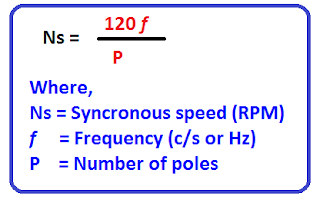When a three-phase supply is fed to the stator of an induction motor, the stator draws current from the 3-phase supply, which produces the magnetic field.
The stator coils of an induction motor are placed 120 degrees apart for the production of the magnetic field.
The property of this magnetic field is that its magnitude is constant. However, the flux changes its direction throughout the cycle. Thus, the rotating magnetic field is set up in the air gap of the induction motor. The speed of the rotating magnetic field can be expressed by following mathematical expressions.

The rotating magnetic flux produced in the stator travels through the air gap and gets linked to the rotor conductor of the induction motor. The rotational flux linking to the rotor conductor induces a voltage in the rotor circuit. The rotor conductor is a short-circuit at the end ring, and the current starts flowing in the rotor.
The rotational magnetic flux produced in the stator travels through the air gap and gets linked to the rotor conductor of the induction motor. The rotational flux linking to the rotor conductor induces a voltage in the rotor circuit. The rotor conductor is a short-circuit at the end ring, and the current starts flowing in the rotor.
Due to an interaction of rotational magnetic flux and the rotor current, torque is produced in the rotor, and the rotor starts rotating. The magnetic flux is rotating, so the torque produced is also rotating because the torque produced in the motor is proportional to the magnetic flux.
Thus, a three-phase induction motor does not require any external means to start, and it is self-starting.
2 thoughts on “Why Three Phase Induction Motor Self-Starting?”